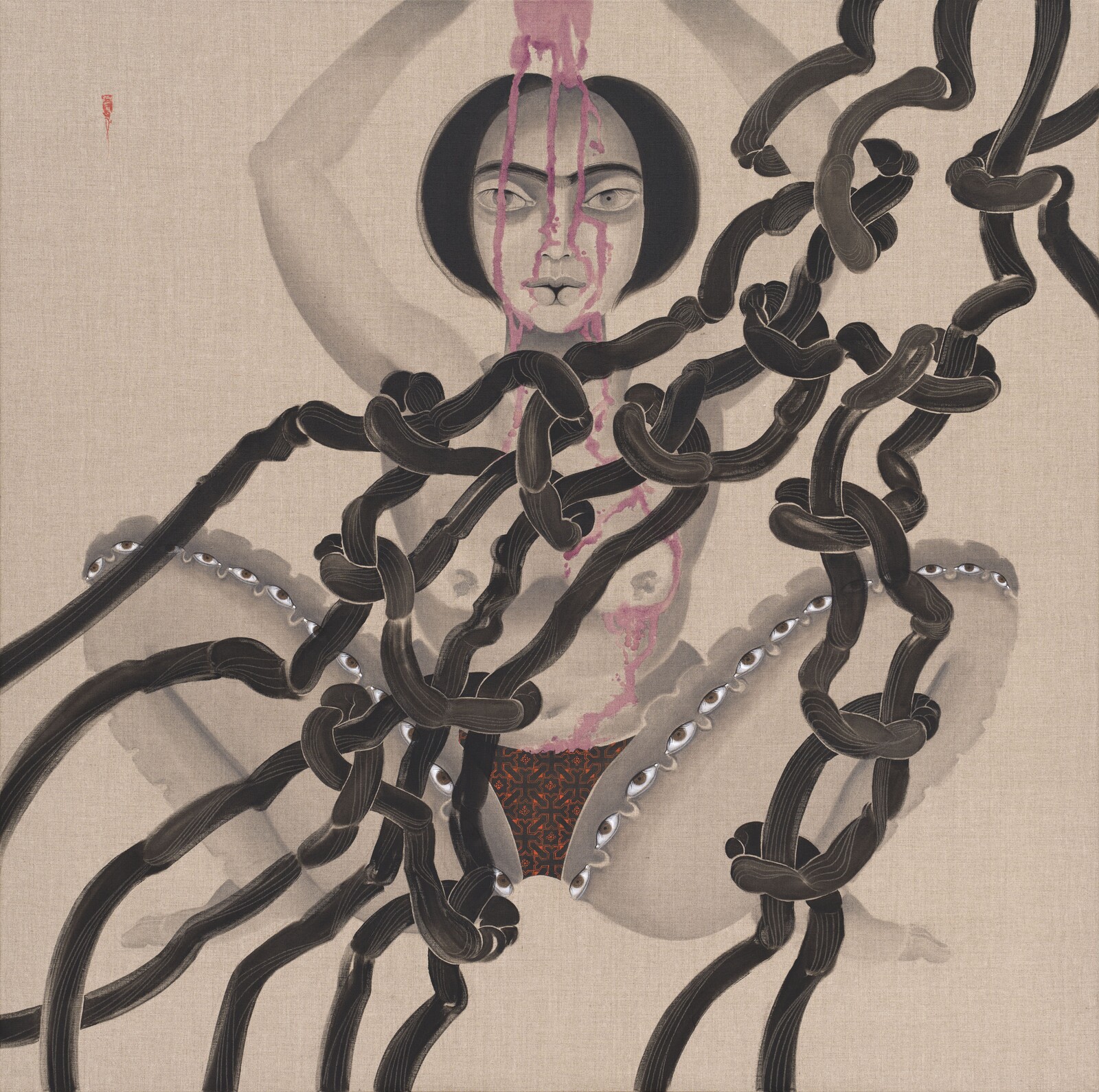June 24–September 17, 2023
Grabbeplatz 4
40213 Düsseldorf
Germany
Hours: Tuesday–Sunday 11am–6pm
T +49 211 8996243
F +49 211 8929168
mail@kunsthalle-duesseldorf.de
Artists: Keltie Ferris, Ilse Henin, Hayv Kahraman, Gisela McDaniel, Soraya Sharghi, Emma Talbot
The late 1960s were a momentous time of political and social unrest, artistic solidarity, and experimentation in West Germany, often combined with anti-capitalist critique. For Ilse Henin, who was a university student in those years, it was a formative time. In the late 1970s, however, she took a break from art, finding it, like many of her female colleagues, too male-dominated. In the 1980s she returned to her artistic work, deliberately maintaining some distance from the art world. It always seemed necessary to her to create an artistic as well as social counterculture within society and, from the position of an outsider, to continuously develop a work that shows her image of society in a very personal way as well as a psychoanalytical view of different cultural phenomena.
Based on Ilse Henin’s works, a web of connections is traced to the five younger, contemporary artists in the exhibition. Works by Keltie Ferris (b. 1977 in Louisville, Kentucky, United States), Ilse Henin (b. 1944 in Cologne, Germany), Hayv Kahraman (b. 1981 in Baghdad, Iraq), Gisela McDaniel (b. 1995 in Bellevue, Nebraska, United States), Soraya Sharghi (b. 1988 in Tehran, Iran), and Emma Talbot (b. 1969 in London, United Kingdom) are united by the interweaving of supposedly traditionally feminine subjects, which they have developed in different directions.
The “feminine” as a subject is brought into a contemporary context. Women are no longer attractive accessories or projections of the male gaze, but the protagonists and bearers of identity in the works. Women, as individuals, in groups, or as part of a family or tribe, stand up for themselves and for everyone they represent. They are strong, self-determined, and aware of their position as heroines of a new narrative of femininity. At the same time, conventional notions of femininity and masculinity are questioned.
Materials and techniques that are often read as “female” or “feminine,” such as fabric, beads, yarn, sewing, embroidery, and collage, are also taken up and placed in a contemporary context. These aesthetics, long derided as handicrafts or decoration, are used loudly and exuberantly with expressive and impulsive colors in a way that is somewhat reminescent of Pop art.
The works by these six artists thus show a processuality that leads the viewer from the 1960s to the present, from painting to drawing to sculpture and installations, from femininity to masculinity to diversity. Above all, however, it is a process of empowerment. In the works themselves as well as in their combination, groups, associations, and processes are formed which, despite their differences, reveal numerous parallels. They show the struggle for justice and self-determination, most recently evident in the feminist revolution in Iran, which artists have long had to pursue and continue to pursue today in a world (and art world) that is still dominated by cis males.
The title of the exhibition The Inescapable Intertwining of All Lives refers to an interview by The Collective Eye with Judith Butler from Kunstforum International (no. 285) in which Butler emphasizes the necessity of collective coexistence for justice in society.
The exhibition The Inescapable Intertwining of All Lives is part of a series of investigations into the physical and its significance for being human, which the Kunsthalle Düsseldorf has repeatedly focused on in recent years.
A publication in German and English will accompany the exhibition.
The exhibition is curated by Gregor Jansen and Alicia Holthausen.

